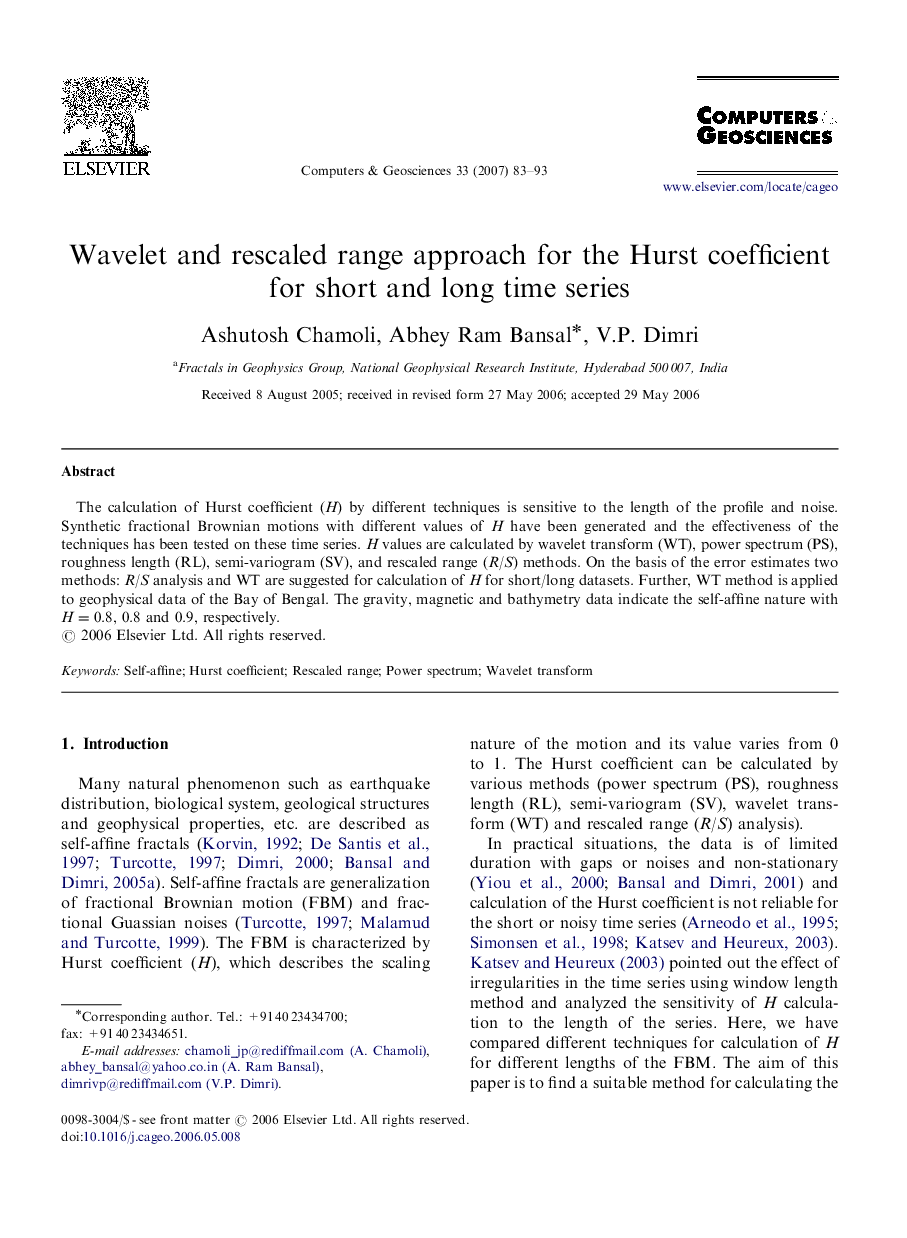| Article ID | Journal | Published Year | Pages | File Type |
|---|---|---|---|---|
| 508368 | Computers & Geosciences | 2007 | 11 Pages |
Abstract
The calculation of Hurst coefficient (H) by different techniques is sensitive to the length of the profile and noise. Synthetic fractional Brownian motions with different values of H have been generated and the effectiveness of the techniques has been tested on these time series. H values are calculated by wavelet transform (WT), power spectrum (PS), roughness length (RL), semi-variogram (SV), and rescaled range (R/S) methods. On the basis of the error estimates two methods: R/S analysis and WT are suggested for calculation of H for short/long datasets. Further, WT method is applied to geophysical data of the Bay of Bengal. The gravity, magnetic and bathymetry data indicate the self-affine nature with H=0.8, 0.8 and 0.9, respectively.
Related Topics
Physical Sciences and Engineering
Computer Science
Computer Science Applications
Authors
Ashutosh Chamoli, Abhey Ram Bansal, V.P. Dimri,
